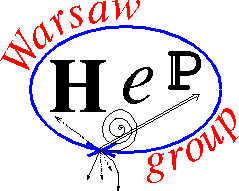SEMINARIUM FIZYKI WIELKICH ENERGII
Dnia 2 czerwca (piątek) o godzinie 10:15, w sali B2.38 odbędzie się seminarium, na którym zostanie wygłoszony referat pt.:
„Tau neutrinos. What do we know? What can we learn from them?”
Referuje: dr hab. Katarzyna Grzelak (IFD UW)
Tau neutrinos are the least studied leptons. Due to difficulty in distinguishing tau neutrinos from other neutrino flavours, low cross-section and high threshold energy for charged-current interactions only 19 tau neutrino candidates have been event-by-event selected to date.
In the seminar the current status of tau neutrino-related physics, new experiments and new ideas to improve our knowledge of lepton sector will be presented.
Serdecznie zapraszamy
dr hab. Katarzyna Grzelak
prof. dr hab. Jan Królikowski
prof. dr hab. Aleksander Filip Żarnecki

